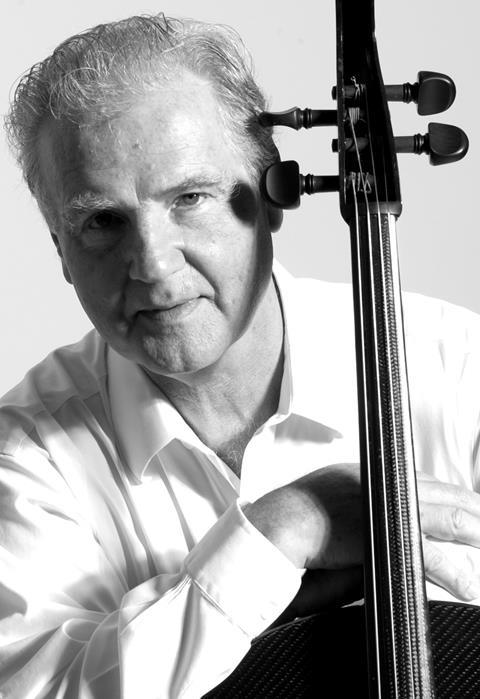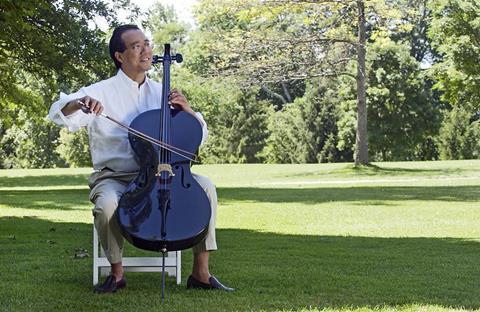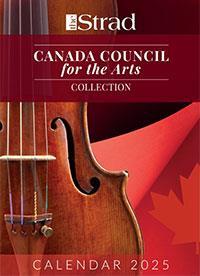Leguia was a long-standing member of the Boston Symphony Orchestra and renowned for his Luis and Clark carbon fibre instruments

Luis Leguia, cellist and pioneer of carbon fibre instruments has died, aged 89. Leguia had a wide-ranging career as a cellist in the Boston Symphony Orchestra for 44 years, and as an inventor, notably designing carbon fibre instruments for Luis and Clark.
Leguia was born in 1935 and was brought up by his mother, who worked as a secretary, in Los Angeles, CA. Most of his childhood was spent moving between boarding houses and he began playing the cello at the relatively late age of 15.
He trained as a cellist at the École Normale de Musique de Paris and the Juilliard School in New York City, studying with Arthur van den Bogaerde, Kurt Reher, Andre Navarra, Leonard Rose and Pablo Casals.
Upon realising that he would not be able to graduate from Juilliard with a diploma, due to his lack of a high school qualification, Leguia left Juilliard and joined the Army Band. He also performed with the National Symphony, the Houston Symphony at the invitation of Leopold Stokowski, and the Metropolitan Opera Orchestra. He joined the Boston Symphony in 1963, where he played until his retirement in 2007.
Leguia played concertos and solo recitals on several continents, making tours through the US, Canada, Europe, South Africa, Lebanon, Ethiopia and Syria, as well as 15 solo tours of South America. He gave masterclasses all over the world and was the chair of the Boston Conservatory cello department for nearly a decade.
He premiered numerous works, including the Boston premiere of Schoenberg’s Cello Concerto, and the world premiere performances of works by Robert Parris, Pamela J. Marshall, Vincent Frohne, Robert Evett. Edgar Valcarcel and Josep Soler.
Leguia’s passion for sailing led him to explore carbon fibre innovations in instrument making. According to a tribute published by Luis and Clark, he started thinking about resonance while out on his catamaran, as he felt the hulls humming.
’He realised how the old boats were made, and seeing the new fibreglass ones and the ultra-sophisticated boats in carbon fibre, made him think those materials might make a great medium for a cello.’
Leguia considered that an instrument made from carbon fibre could make it lighter, more responsive and very strong. Developing ideas over the course of eleven years, Leguia made his first prototype in 1990 from fibreglass. This was followed by two more prototypes, with the final one comprising three pieces: one for the back, side and neck, another for the top and the final for the fingerboard.
With his wife Stephanie, Leguia thought that his creation was of quality on par with traditional instruments, and could be sold to players who could not afford wooden instruments. He began collaborating with Steve Clark, a carbon fibre product manufacturer whom Leguia met through his sailing connections. Leguia and Clark worked together to get the instruments up to a point where they were commercially viable, after which, Leguia brought on Matt Dunham as the current fabricator since 2002.

Leguia went on to invent the carbon fibre violin, viola and double bass, in addition to the cello.
Following his retirement from the Boston Symphony Orchestra, Leguia continued to perform as a soloist and work actively with Luis and Clark ‘checking each instrument that leaves the shop.’
’Louie sometimes laments that he will only be remembered as the inventor of the carbon fibre stringed instrument and not a cellist, but it’s been a remarkable journey for someone with very humble beginnings,’ Luis and Clark posted on its website.
Watch: Video: First violin performance in space
Read: Kebra-Seyoun Charles receives rare 18th-century double bass from pioneering surgeon
The number one source for playing and teaching books, guides, CDs, calendars and back issues of the magazine.
In The Best of Technique you’ll discover the top playing tips of the world’s leading string players and teachers. It’s packed full of exercises for students, plus examples from the standard repertoire to show you how to integrate the technique into your playing.
The Strad’s Masterclass series brings together the finest string players with some of the greatest string works ever written. Always one of our most popular sections, Masterclass has been an invaluable aid to aspiring soloists, chamber musicians and string teachers since the 1990s.
The Canada Council of the Arts’ Musical Instrument Bank is 40 years old in 2025. This year’s calendar celebrates some its treasures, including four instruments by Antonio Stradivari and priceless works by Montagnana, Gagliano, Pressenda and David Tecchler.













































No comments yet